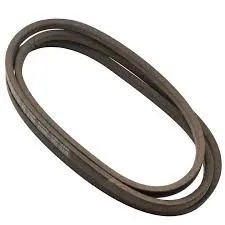- Arabic
- French
- Russian
- Spanish
- Portuguese
- Turkish
- Armenian
- English
- Albanian
- Amharic
- Azerbaijani
- Basque
- Belarusian
- Bengali
- Bosnian
- Bulgarian
- Catalan
- Cebuano
- Corsican
- Croatian
- Czech
- Danish
- Dutch
- Afrikaans
- Esperanto
- Estonian
- Finnish
- Frisian
- Galician
- Georgian
- German
- Greek
- Gujarati
- Haitian Creole
- hausa
- hawaiian
- Hebrew
- Hindi
- Miao
- Hungarian
- Icelandic
- igbo
- Indonesian
- irish
- Italian
- Japanese
- Javanese
- Kannada
- kazakh
- Khmer
- Rwandese
- Korean
- Kurdish
- Kyrgyz
- Lao
- Latin
- Latvian
- Lithuanian
- Luxembourgish
- Macedonian
- Malgashi
- Malay
- Malayalam
- Maltese
- Maori
- Marathi
- Mongolian
- Myanmar
- Nepali
- Norwegian
- Norwegian
- Occitan
- Pashto
- Persian
- Polish
- Punjabi
- Romanian
- Samoan
- Scottish Gaelic
- Serbian
- Sesotho
- Shona
- Sindhi
- Sinhala
- Slovak
- Slovenian
- Somali
- Sundanese
- Swahili
- Swedish
- Tagalog
- Tajik
- Tamil
- Tatar
- Telugu
- Thai
- Turkmen
- Ukrainian
- Urdu
- Uighur
- Uzbek
- Vietnamese
- Welsh
- Bantu
- Yiddish
- Yoruba
- Zulu
දෙසැ. . 10, 2024 13:40 Back to list
Choosing the Right PK Belt for Your Alternator System and Performance Needs
Understanding the PK Belt and Alternator System
The PK belt and alternator system is an essential component in the functioning of modern vehicles. The PK belt, also known as a serpentine belt, plays a crucial role in transmitting power from the engine to various accessories, including the alternator, which is responsible for generating electrical power for the vehicle's electrical systems and charging the battery. To fully appreciate the importance of these components, it's essential to understand their functions, the materials used, potential issues, and maintenance considerations.
What is a PK Belt?
The PK belt is a type of multi-ribbed belt designed to operate various engine accessories smoothly and efficiently. Its construction includes high-strength rubber and fabric materials, allowing it to withstand immense tension and heat generated during engine operation. The design usually features several ribs that grip the pulleys securely, reducing slippage and ensuring effective power transmission.
The PK belt is quite versatile, as it can drive multiple accessories including the water pump, power steering pump, air conditioning compressor, and, most importantly, the alternator. This system simplifies the layout of engine components compared to older vehicles that used separate belts for different accessories, thereby saving space, weight, and installation complexity.
The Role of the Alternator
The alternator is a vital component that converts mechanical energy from the engine into electrical energy. It generates alternating current (AC) which is then transformed into direct current (DC) to charge the vehicle battery and power electrical systems when the engine is running. These systems include headlights, dashboard electronics, infotainment systems, and most importantly, the ignition system that keeps the engine running.
pk belt alternator

The alternator relies on a pulley attached to the engine crankshaft, which drives the PK belt. As the belt rotates, it turns the alternator's rotor within its stator, inducing an electric current. The more the engine runs, the more power the alternator generates, ensuring that the battery remains charged and that the vehicle's electrical needs are met.
Common Issues and Maintenance
Despite their durability, PK belts can wear out, fray, or crack over time due to heat, tension, and environmental factors. A worn belt can lead to slippage, which may cause inadequate power transfer to the alternator and other accessories, leading to electrical failures or battery drain. Consequently, it is vital to inspect the PK belt regularly and replace it when signs of wear become evident, typically every 60,000 to 100,000 miles, depending on the vehicle and driving conditions.
Similarly, alternators can also experience issues such as bearing failure, voltage regulator problems, or conductive winding failures. Symptoms of a failing alternator include dimming headlights, warning lights on the dashboard, and electrical system malfunctions. Regular inspection of both the PK belt and alternator, alongside routine maintenance of the entire vehicle’s electrical system, can help catch and resolve issues before they lead to significant problems.
Conclusion
The PK belt and alternator ensemble is vital for modern vehicle functionality, with the belt efficiently transferring power and the alternator converting mechanical energy into usable electrical power. Understanding how these components work, the materials involved, and their maintenance can greatly improve a vehicle's reliability and performance. Regular checks and timely replacements of worn parts are essential to keep the vehicle’s electrical system functioning optimally and to ensure a smooth driving experience for years to come.
-
Korean Auto Parts Timing Belt 24312-37500 For Hyundai/Kia
NewsMar.07,2025
-
7PK2300 90916-T2024 RIBBED BELT POLY V BELT PK BELT
NewsMar.07,2025
-
Chinese Auto Belt Factory 310-2M-22 For BMW/Mercedes-Benz
NewsMar.07,2025
-
Chinese Auto Belt Factory 310-2M-22 For BMW/Mercedes-Benz
NewsMar.07,2025
-
90916-02660 PK Belt 6PK1680 For Toyota
NewsMar.07,2025
-
drive belt serpentine belt
NewsMar.07,2025

